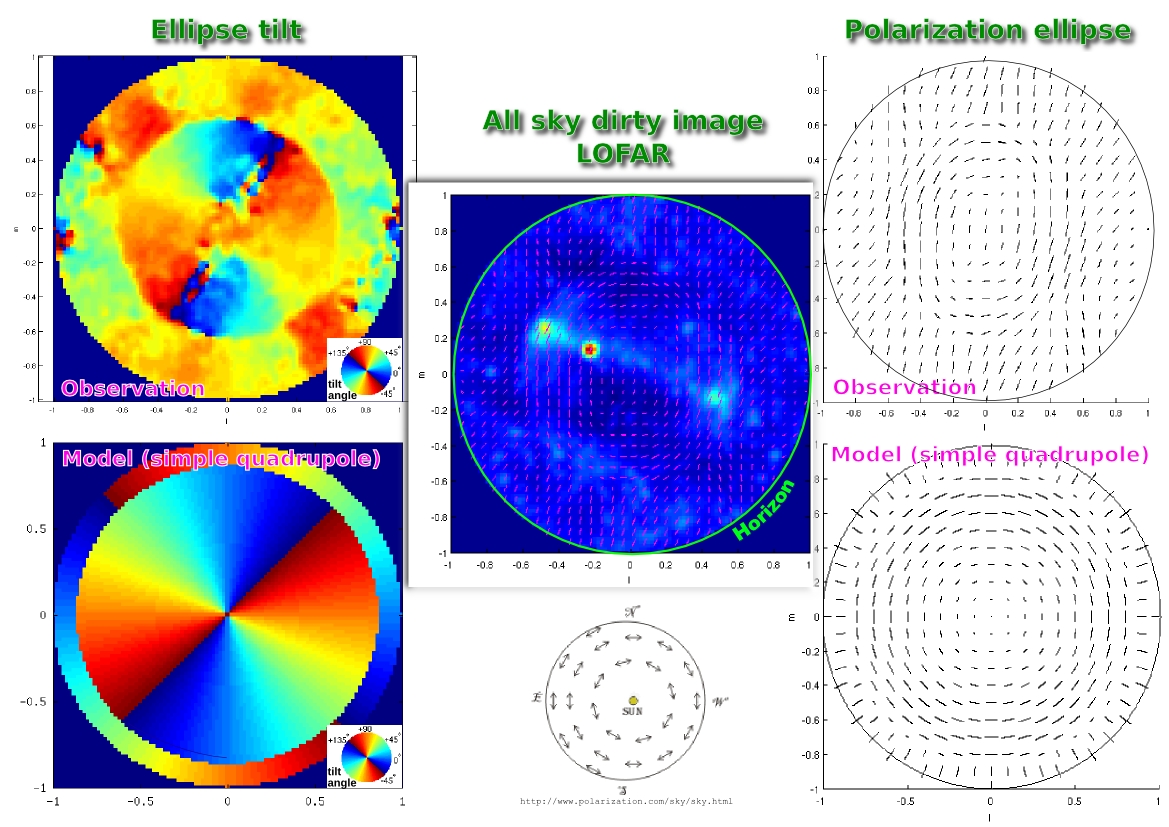Daily Image
15-10-2009Today's colloquium: Aspects of precision polarimetry in radio astronomy (A. Carozzi, Glasgow)
| Submitter: | Jean-Mathias Griessmeier |
| Description: | These are exciting times for radio-polarimetry: polarimetry has moved up the agenda in many radio-astronomical projects, and modern radio-telescopes are now designed with polarimetry firmly in mind. As a consequence, the demands on modern polarimeters and polarimetry have never been more exacting than now. I will try to argue that this trend can be viewed as the dawn of what I call precision polarimetry, as evidenced by the need for an extended formalism to describe new polarimetric regimes and new parameters to quantify the higher precision achieved in modern radio polarimeters. These developments are particularly relevant to wide-field polarimetry (where the paraxial approximation is no longer valid) touted as an important trend in itself for radio astronomy. Image above: Does LOFAR wear polaroid sunglasses at night (and day)? Similar to daylight from a clear blue sky, it has recently been suggested that the radio-sky as seen by a plane-polarized dipole array (such as LOFAR) is azimuthally polarized, even though the sources in both cases are themselves mainly unpolarized. But although the effect and pattern are the same, the underlying principle is very different: while sunlight becomes azimuthally polarized after scattering in the atmosphere, the radio-sky is perceived as azimuthally polarized in a plane-polarized array after (mainly) unpolarized isotropic radiation is (loosely speaking) projected into the plane of the array. A more detailed theory takes into account not only the dipole-moment of the antenna elements by also the higher multipole moments. All-sky images made with LOFAR LBA at 80MHz seem to be consistent with this effect. As one can see from images of the polarization ellipses themselves, or alternatively their tilt, the main features of this image-plane effect are reasonably explained with a simple, (dual-crossed-)quadrupole model of the LBA antenna elements (that is, a pair of crossed dipoles over a perfect ground). According to the model, the radio-sky should be perceived as azimuthally polarized close to zenith, and as radially polarized closer to the horizon. The model is based on the paper "A generalized measurement equation and van Cittert-Zernike theorem for wide-field radio astronomical interferometry", MNRAS, 395, 1558-1568 (2009) ( http://arxiv.org/abs/0812.0141 ) by T. D. Carozzi and G. Woan. |
| Copyright: | T. Carozzi |
| Tweet |  |
